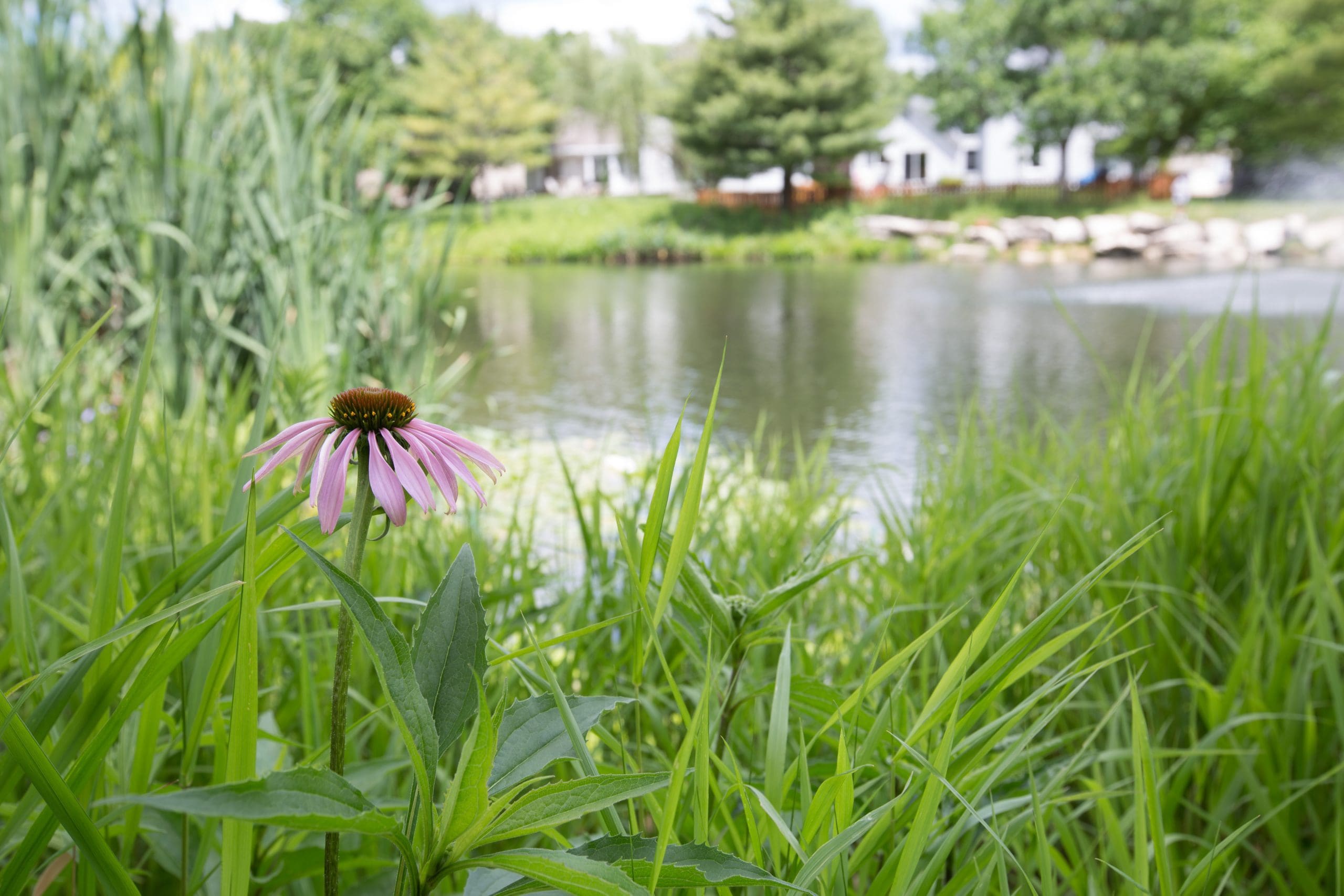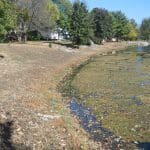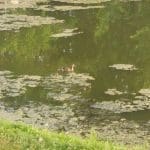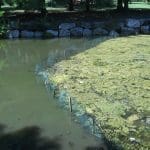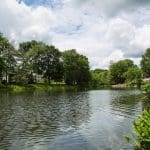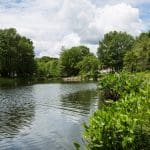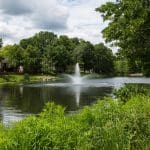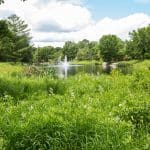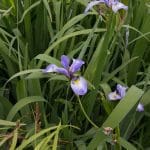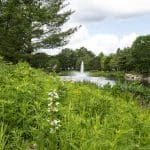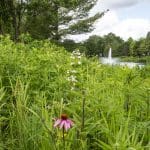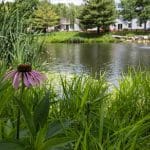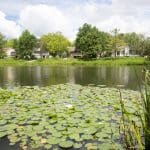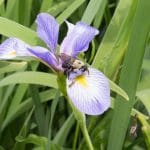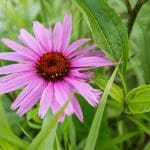PRE-RESTORATION OF HABITAT
When we engaged with the Remington Oaks Home Owners Association (ROHA), it was a traditional, mowed-grass landscape surrounding a detention basin. The lake on the property had consistent algae presence due to the regular influx of fertilizer from the many adjacent urban tributaries. Complicating the land use planning, a resident group of Canadian geese were becoming aggressive and further discouraging normal recreational use of the space .
- Before Habitat Restoration
- Waterfowl In Area
- Changes
OUR GOAL
We collaborated with ROHA and the Missouri Department of Conservation (MDC) to outline a plan to address the site challenges with a variety of solutions. Strips of pollinator habitat would replace the mowed terrain, providing habitat while discouraging the geese from continued residency. Access to the lake for fishing would remain in select mowed areas with benches and stone outcroppings. Emergent plant beds would be installed in pockets around the lake to increase biodiversity, habitat type, and help filter water. Overall, the solutions proposed cultivated wildlife/pollinator habitat while making the site more attractive and welcoming to resident s. MDC’s participation provided a cost share component to help offset the initial investment through a community conservation grant.
YEAR THREE RESULTS
The property completely transformed into an environment full of texture, color, and life during the third year. The plants grown from our custom seed mix created a food source for pollinators from April through October due to their diversity in species, height and bloom times. We left the vegetation standing through the winter to provide a food source for the resident birds. The newly vegetated lake borders reduce velocity and filter runoff water before it enters the lake, and, through our educational efforts in the community, the water that enters the lake contains less fertilizer from nearby yards. With these combined, system based efforts, we significantly reduced the algae present in the lake while improving clarity.
- Remington Oaks Habitat
- Remington Oaks Habitat
- Remington Oaks Habitat
- Remington Oaks Habitat
- Remington Oaks Habitat
- Remington Oaks Habitat
- Remington Oaks Habitat
- Remington Oaks Habitat
- Remington Oaks Habitat
- Remington Oaks Habitat Iris
- Remington Oaks Habitat Coneflower
Lastly, the taller vegetation caused the Canadian geese to relocate, allowing mallard ducks, egrets, and a blue heron to become regular visitors to the lakeside habitat. With a proper seed mix and specific maintenance plan, we have successfully met the homeowners association’s goals of establishing a clean, welcoming environment.
Remington Oaks has not only increased the number of pollinators in the area, but increased the overall habitat diversity. The city’s adjoining county greenways provide a food source for wildlife.
WHAT’S NEXT
It is possible to utilize public input to update the site plan for Remington Oaks.


